Chinese bacon
Bacon refers to processed meat processed by salting and then baked (or under sunlight). Bacon has strong antiseptic ability, prolongs storage time and adds special flavor, which is the main difference from bacon. Bacon is not made in the wax month, but for bacon, the wax of the wax month and bacon is not the same word in ancient Chinese, that is, the wax of the wax month is the traditional wax, and the wax of bacon is the simplified word for the wax of the wax month. Therefore, the reason why bacon is called bacon, and why people now read l_and not x, in addition to simplifying the reasons for the two words no difference, may be really with bacon is generally made in the Lunar New Year's Eve meal for the purpose of.
Bacon is a kind of Chinese cured meat, mainly popular in Sichuan, Hunan and Guangdong areas, but also produced in other parts of the South, because it is usually cured in the lunar calendar month, so called "bacon".
Form
Smoked bacon, uniform surface and inside, cooked and sliced, transparent and shiny, bright color, red yellow, taste mellow, fat not greasy, thin teeth, not only unique flavor, but also with appetizing, cold, digestive and other functions. Hubei bacon has maintained the characteristics of good color, fragrance, taste and shape, known as "a cooked meat Baijiaxiang" praise.
Characteristic
Bacon from fresh meat processing, production to storage, meat quality unchanged, long-term maintenance of fragrance, there are long-standing characteristics of good. Because the meat is smoked by cypress branches, mosquitoes and flies do not crawl in summer, but do not deteriorate after three volts, becoming a unique local flavor food.
Bacon is produced in North and South China, with more salted pork in the South and salted beef in the north. The variety of bacon is varied, and the same variety has its own characteristics because of its different origins and processing methods.
Pork, mutton, its viscera, chicken, duck and fish can be classified as raw materials; Guangdong, Hunan, Yunnan and Sichuan can be classified as their origins; and many varieties can be found according to the different parts of raw materials. The famous varieties include Cantonese bacon, Hunan bacon and Sichuan bacon.
The Cantonese style bacon is famous for its braids. It is made of pig * s rib meat as raw material. It has the characteristics of strict selection, fine production, golden color, regular shape, fragrant and mellow taste, and pleasant smell.
Hunan bacon, also known as Sanxiang bacon, is made of six kinds of processes, namely, thin, tender meat and suitable weight * Ningxiang pig. It is processed by cutting, making auxiliary materials, pickling, salt washing, drying and fumigating. It is characterized by reddish yellow color, fat like wax, muscular brown red, salty and palatable, strong aroma, and not greasy food.
Sichuan bacon is made by cutting the meat into 5 cm wide strips and then pickling, washing, drying, baking. The finished product has the characteristics of red as fire, rich aroma, delicious taste and rich nutrition.
In addition, Henan butterfly wax pig head, Hubei wax pig head, wax chicken, wax fish, wax duck, Guangxi wax pig liver, Shaanxi wax lamb, wax donkey meat, Shanxi Changzhi wax donkey meat, Gansu wax beef and so on.
1. The bacon is rich in phosphorus, potassium and sodium, and also contains fat, protein, carbohydrates and other elements.
2. The bacon is made of fresh skinned and floral meat, which is divided into pieces and salted with salt and a small amount of sodium nitrite or sodium nitrate, black pepper, clove, fragrant leaves, fennel and other spices, and then dried or smoked. It has the effect of appetizing, dispelling cold and digesting food.
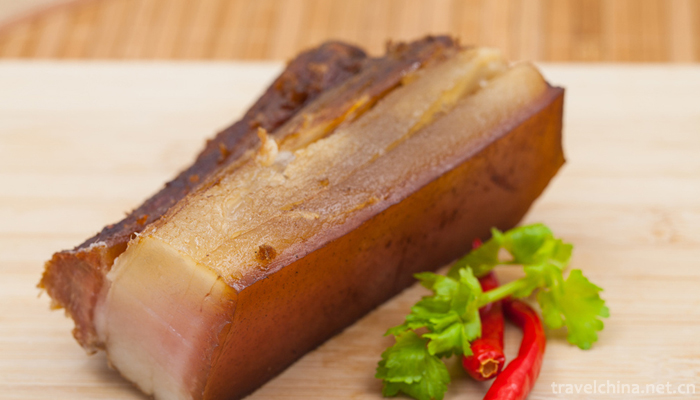
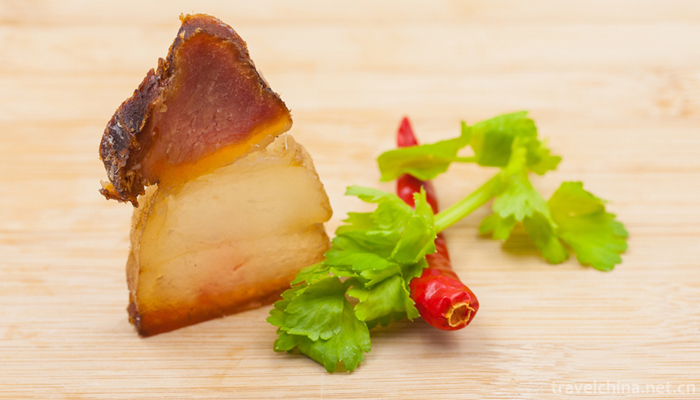
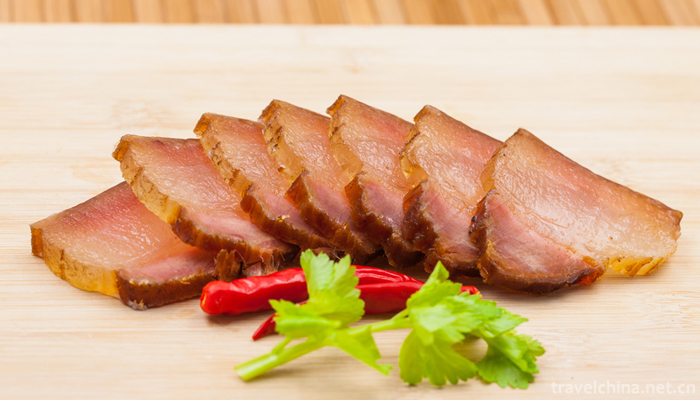
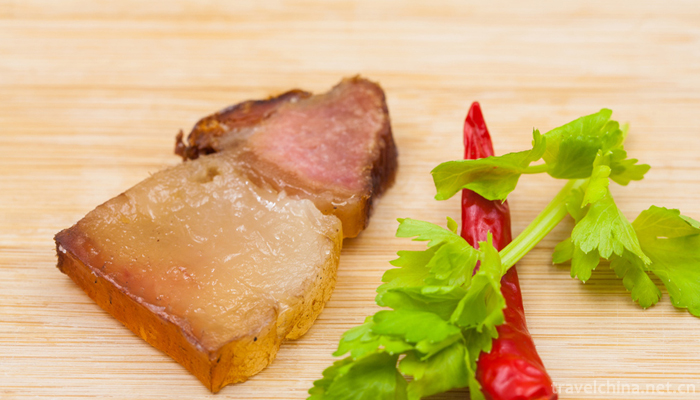
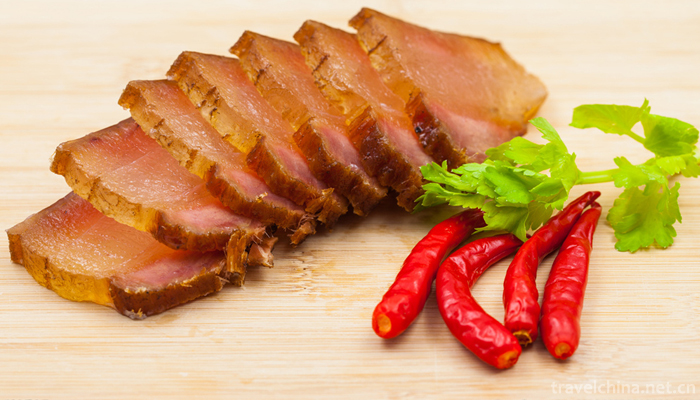
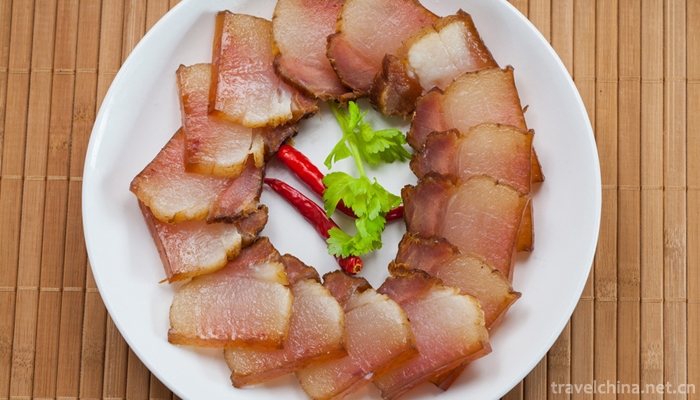
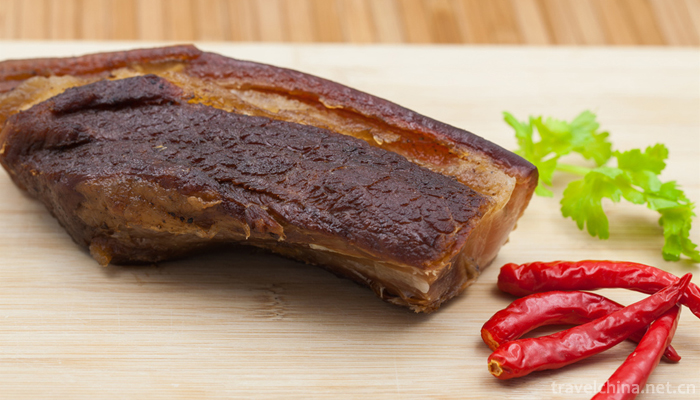

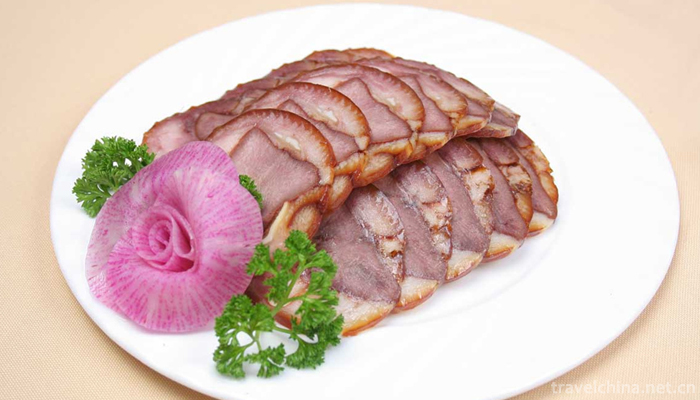
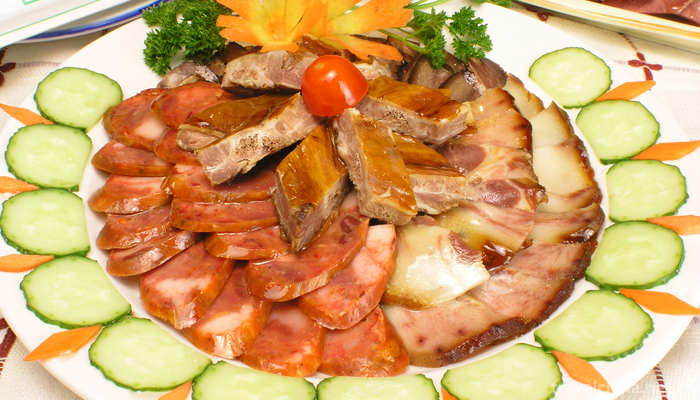
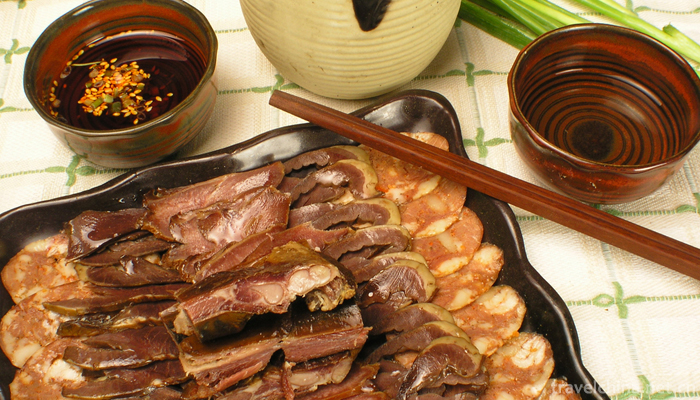
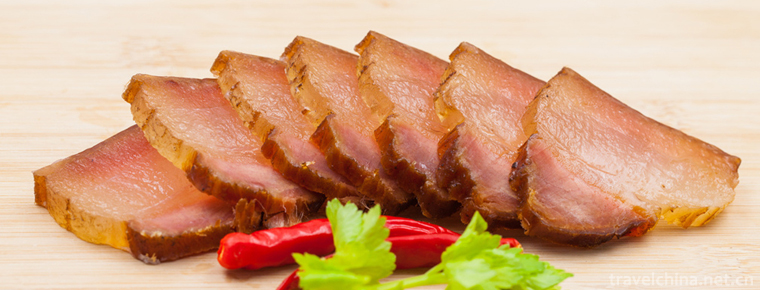
-
1.qingming riverside landscape garden
Qingming Shanghe Garden is a large Song Dynasty cultural theme park constructed by the people's government of Kaifeng City in Henan Province
Time 2018-12-09 -
2.Niangziguan Scenic Area
Niangziguan is a famous pass of the Great Wall of China, known as the Ninth Pass of the Great Wall of China, and it is a must for military strategists of all dynasties.
Time 2019-02-07 -
3.Totem Road
The ancient totem road is located in Yangshuo's famous "Shili Gallery". Not far from Guilin, the scenic spot exhibits primitive life scenes such as stone tools, pottery, natural totem pillar
Time 2019-02-22 -
4.Straw weaving
Grass weaving is a popular folk handicraft. It makes use of the grass produced in different places to make materials locally and weave into various daily necessities
Time 2019-04-15 -
5.GA Da Meilin
Gadamelin (1892 - April 5, 1931), Mongolian, surname Molettu (translated into Chinese as Meng), Nadamud, Han name Meng Qingshan, also known as Yexi, Mongolian legendary hero. Born in Zhelimu League
Time 2019-04-30 -
6.Jingdezhen Handmade Porcelain Craft
Jingdezhen Handmade Porcelain Craft, the traditional handmade Porcelain Craft in Jingdezhen City, Jiangxi Province, is one of the national intangible cultural heritage.
Time 2019-05-08 -
7.Legend of Li Shizhen
Li Shizhen is a great medical scientist in Ming Dynasty in China. His footsteps have traveled all over Jiangxi, Jiangsu, Anhui, Hunan and Guangdong. The legends about him and Compendium of Materia Med
Time 2019-05-13 -
8.Maonan Fat Cover
"Fat set" is the general name of Maonan people's vow-making activities. It prevailed in the Ming and Qing Dynasties. At the beginning, Maonan people used Nuo rituals to sacrifice the heavens
Time 2019-05-27 -
9.Poop love song
In February 2006, a cultural census unexpectedly found "Poya Ge Shu" in Poya Village. Through expert research, 81 patterns in "Poya Ge Shu" have the character of words, and are one
Time 2019-06-09 -
10.Brewing Techniques of Zhenjiang Hengshun Fragrant Vinegar
Zhenjiang Hengshun aromatic vinegar brewing technology production chooses high-quality glutinous rice produced in the "land of fish and rice" as raw material, using solid-state layered ferme
Time 2019-07-25 -
11.Gufo weir
Located in Huanglongxi section of Jinjiang River in Chengdu, Gufo weir was built in the 25th year of Qianlong reign. Zhangfengzhu, the magistrate of Pengshan County, built a weir to irrigate Huayang, Renshou and Pengshan Sanyi fields.
Time 2020-11-05 -
12.Mianyang scenic spots
Mianyang City is a famous historical and cultural city in Sichuan Province, the main node of the dajiuzhai international tourism circle and the Three Kingdoms Shu Road culture international tourism line. It has a 5A level scenic area of "Beichuan Qiang city tourism area"
Time 2020-12-14